Welcome. In this post, we will see our interesting visit to Rohidaa Fort and Bhor Palace. This fort is also known as Vichitragada. It is known for winds during monsoon. Let us try to recreate the trek.
Location and getting there:
Location and getting there:
From Swargate, take any bus to Bhor. It is about one hour journey. From Bhor, take any of the shared vehicles to Baajarawaadi village. This distance is about 15 kilometers. Make arrangements with the same person for return journey if there are more persons in the group. They take you for a "ride" for sure.
To manage time better, it is advisable to take own vehicle. The road upto Baajarawaadi is paved. Medium sized vehicles can ply.
History:
There is no recorded history of the fort.
Trek:
We started at 6:30 from Swargate. The bus dropped us on Bhor station in about an hour. For breakfast, we were searching for a hotel. At last, we could find one hotel open. Most of the marketplace was closed. As we had our breakfast, the leaders arranged for transport to Baajaarawaadi. The entire group was accommodated in two vehicles. In another hour, we were in Baajaarawaadi village. We could see Rohidaa fort in front of us. After introductions, the trek started. It was about 9:15 AM. The route upto the fort is over a ridge. The incline becomes steep in 2-3 places. There are poles along the route. So there was no question of missing the route.
As we gained some height, the scene was beautiful. It was lush green everywhere. Since it was not raining at that moment, the visibility was better. However some of us had come to the trek to get drenched in the rains. Slowly but surely, most of the group was in the first entrance of the fort in about hour's time. This entrance is small. There was a provision to station some soldiers here. The wooden door that we see is recently made. After coming inside this entrance, there are some stairs which lead to the second entrance. Here we can see one broken/worn out idol of an elephant. There are Sharabhas on this entrance. Some more soldiers could be posted here. We then come to the third entrance. This is peculiar. There is no construction surviving around the structure. So the entrance appears stand alone. Sun and Moon are carved on either side of the entrance. Two elephant-heads adorn the entrance. There are two inscriptions - one in Devanagari and the other in Urdu or Farasi. Once we are inside this entrance, there are remains of an erstwhile office - Sadar. The only structure on the fort is that of Rohideshwara temple. It is renovated recently. We were on the fort by 10:30 AM! It took us around 1 hour to climb up.
 |  |
 |  |
 |  |
 |  |
 |  |
 | 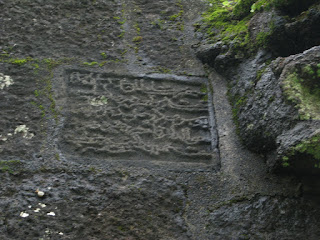 |
 |  |
We took a stroll on the fort. On the North, there is Waaghjaai bastion. There is one derelict temple on this ridge. It is dedicated to Ashtabhuja and Chaturbhuja goddesses. The bastion is in a very good condition. On the East side, Fatteh bastion and Sadar bastion. Sadar bastion is where we enter from. This is the bastion we see in the middle when we ascend the fort. Patane and Damgude bastions are on the West. Shirawale bastion is on the South. Shiravale and Waaghjaai bastions were the main bastions. They are in good condition even today. There is a toilet on Shiravale bastion. The fortification is in good condition between Fatteh and Waaghjaai bastions. There is one secret entrance between these bastions. Since the main entrance is also from the same direction, it is difficult to understand the reason.
 | 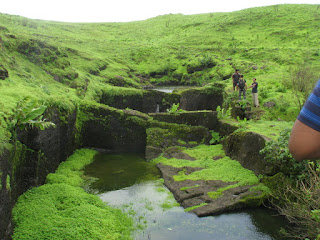 |
 |  |
In the North side, there are several connected water cisterns. One of them is underground. There is one human statue in the sitting position. We could not notice any of this near the tanks. There is one lime grinder on the fort. I missed this too.
Rohideshwara temple is renovated recently. Three idols comprise of Ganapati on the left, Rohideshwara (Bhairav) in the center, and Bhairavi (?) on the right. There is one water tank in front of the temple. There are several memorials for the deceased in front of the temple.
 |  |
 |  |
There are several forts visible from the top. Purandar, Vajragada can be seen on the East; Sinhagada is on the North; Rajagada, and Toranaa can be seen on the North West; Kenjalagada and Kamalagada are on the West; Raireshwara is on the South.
There were several groups on the top of the fort. Some were with small children.
By 1 PM, we started our descent. The rain at last did not disappoint. It started raining for about half an hour. Within 45 minutes we were back in Baajaarawaadi village. Now we had to wait for nearly one hour to get any vehicle back to Bhor. Meanwhile, we explored the village and its surroundings. There is no hotel in the village. So no provision for snacks or lunch. At last, we got some conveyance back to Bhor.
 |  |
 |  |
Bhor Palace
Since we had ample time in hand, we thought of exploring the palace. It was very easy to locate it. 5 minutes walk from the bus stand. The palace is in very good condition. Except for the first courtyard, everything was closed as it was Sunday.
Bhor was one of the Jahagirs attached to Satara state. It was founded by Shankaraji Narayan - one of the eight hereditary ministers appointed by Rajaram Maharaj in 1697. It was acceded to the Dominion of India on 8-Mar-1948. The Pantasachivs - as the rulers were known sold off all the belongings in the palace. But they preserved the palace very well. Later it was given to Municipal Council on rent. Several public functions take place in the palace. Several films are shot here. It is remarkably preserved for us to see how it would have been. It is well kept by the caretakers.
We somehow got admission in the palace after pleading with the caretakers. After hearing our story, he opened the palace.
The main entrance is imposing. It consists of two layers. It does not open in the straight line. So elephants cannot enter through the door. We enter the first courtyard. Here is imposing entrance to the inner courtyard and the throne. There are steps leading to the second floor on either side of the entrance. The door is ornamental. The second courtyard is basically the court of the rulers. This is amazing. I had never seen anything like this before. On one side, there is balcony that opens int he courtyard. It has no walls. Each section has provision to keep some belongings. Probably, it was meant for some important persons coming from distant places. The throne occupies one side. On the other side, there is one temple of family deity. There are some long chambers. After crossing these, we enter the third courtyard. In the center of this courtyard, there is basil. This appears to be private area. Beyond this courtyard, there is fourth courtyard. But this section was locked. In Marathi, we cal it Chausaupi wada - meaning a house consisting of four courtyards. This indeed was! For that matter, a huge one. This was the high point of the trek. The entire structure is so well preserved, that several movies, serials are shot here.
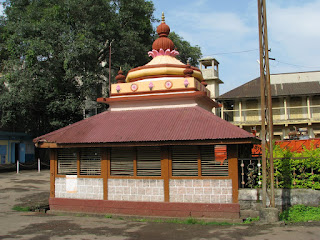 |  |
 |  |
 |  |
 |  |
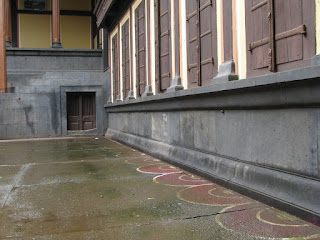 |  |
 |  |
 |  |
 |  |
 |  |
 |  |
 |  |
 |  |
 |  |
After we were content, we left the place for Pune. We were back in Pune by 6:30 PM.
I wish more and more such structures are preserved. And their preservation is made viable. Our future generations can experience what it was in the past. Otherwise, their imaginations would be limited.
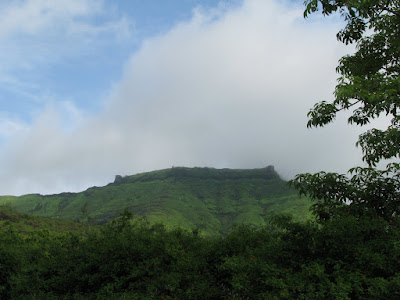

No comments:
Post a Comment